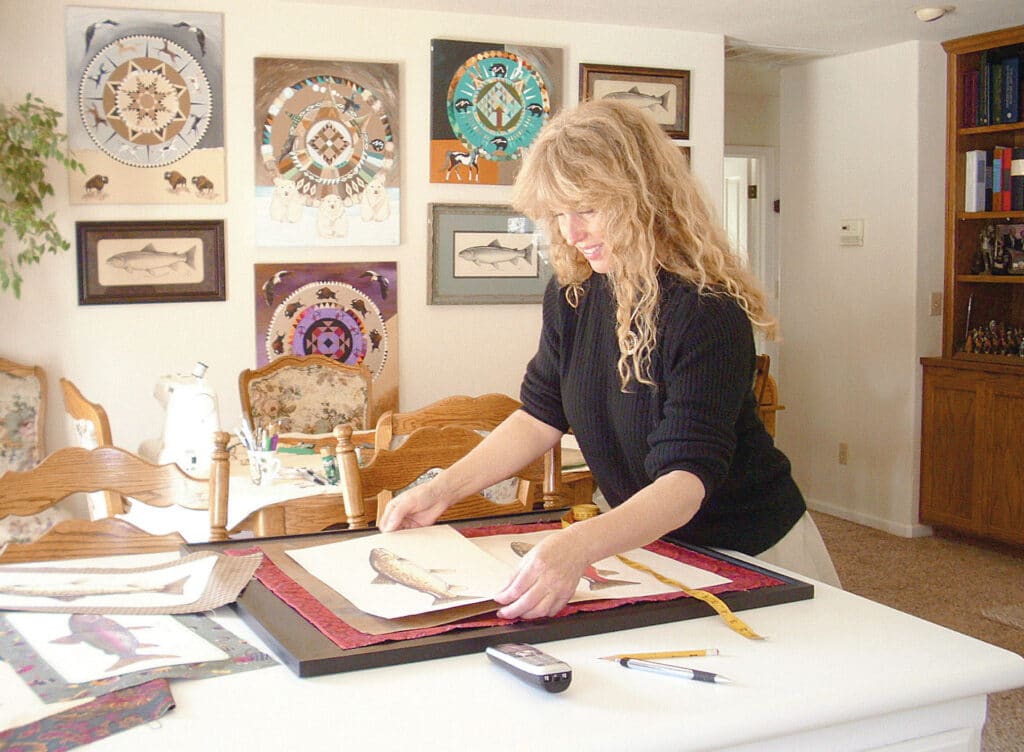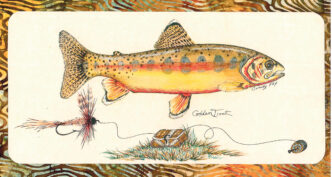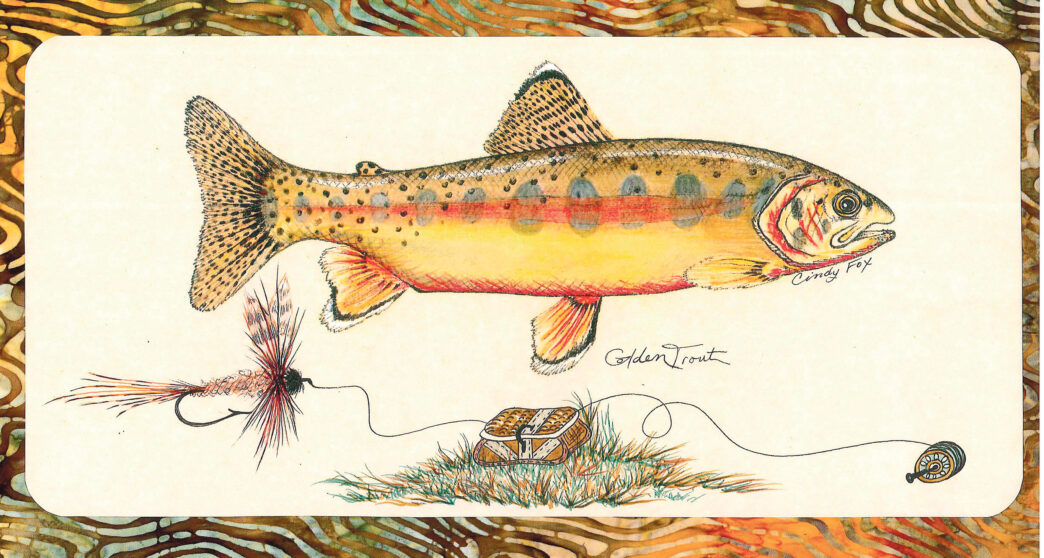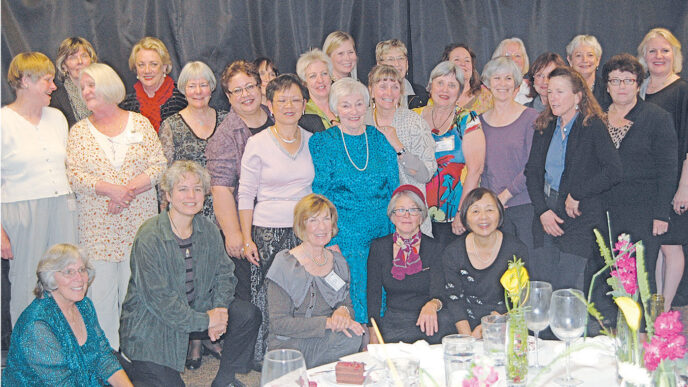Her daughter calls her a gypsy — and for good reason: Cindy Fox is constantly on the move. Her wanderings occur mainly in the mountains, where she feels “most at home,” she says. In conjunction with her love of the outdoors, she has come to focus on fish species, which she has been painting now for twenty years. Cindy’s wanderlust spirit took hold early on. While other young teens were busy socializing, she would (secretively) take her father’s car from their home near Groveland, drive to a remote location, and absorb the rugged surroundings. Later, it would be on a horse, one of her early and continuing loves in life.
Her interest in painting developed during wilderness outings with her (then) husband who was an avid fly fisher. Cindy herself never quite warmed up to the sport, but she marveled at the beauty of the trout her husband would catch. So she started painting them and gave her renderings as gifts. More people wanted them. Today, selling paintings of fish species is how she makes her living. But her life is anything but confined to her studio in her Sonora home.
When not painting or at a booth at an arts-and-crafts festival, Cindy is usually out on a trail, most often by herself or accompanied by her steady companion — Kua, a red Australian shepherd. She may be on a horse, on foot, or on a mountain bike.
She relates: “I have always felt most fulfilled backpacking to some remote lake in the mountains. As a single woman, I do get lonely at times, yet it is a good lonely. It is a lifestyle choice and works for me. Since I am not going to stay at home, I go alone if I have to. The longest time I have done solo backpacking is 20 days. This was two years ago, hiking the John Muir Trail. When I was traveling south and came over a ridge, I dropped down to the Muir Trail Ranch and saw the San Joaquin River flowing through a meadow. And then oh my God I saw horses and heard the sound of cowbells. I felt an amazing sense of nostalgia for a long-ago time, far removed from the present day. It was one of the most moving experiences of my life.”
By the time this is published, Cindy will have embarked on one of her most ambitious undertakings — a solo bike ride on the Lewis and Clark trail from Astoria, Oregon, to Hartford, Illinois, 3,200 miles. She says of Meriwether Lewis and William Clark that she “feels the deepest connection to their journey and wants to pay homage to their courage and spirit.” Her inspiration, though, is Sacagawea, the female Indian guide who helped make the all-male Corps of Discovery expedition successful.
Cindy believes that her fish paintings help advance another of her passions — conservation. She wants the beauty of the fish to inspire others to protect these beautiful creatures and where they live. But every work encompasses more than just her own stylized image of a fish. She seeks to create art that “looks like it could be an illustration out of a gazette or newspaper from the 1890s, that draws upon a bygone era of fly fishers and outdoors persons.” For instance, she might include an original fly pattern, such as a salmon fly tied by William Blacker, one of the most famous fly dressers of the early nineteenth century.

Another of her artistic talents is a signature framing style made with organic paper and fabrics from across the globe. Her quilting background allows her to “see” fabric images and to create “a sea of color and texture.” She hopes that the combinations of the fish colors and hues and designs of the printed fabrics make the “pictures come alive and sing!”
Cindy is unusual in that most fish illustrators are men. She says that when a woman comes to her booth, she is typically curious as to how she got involved in this man’s world. Cindy relates that “the conversation usually begins with how I became a painter of fish, the uniqueness of my framing, the rich colors in my work, and so forth. Soon the woman and I are delving into my adventures away from my art altogether. They want to know where I have hiked or biked, and they are very interested about being out alone. I think I inspire them to get out themselves to experience nature, whether with a companion or not. And that to me fulfills my mission as an artist!”
















